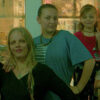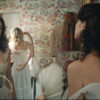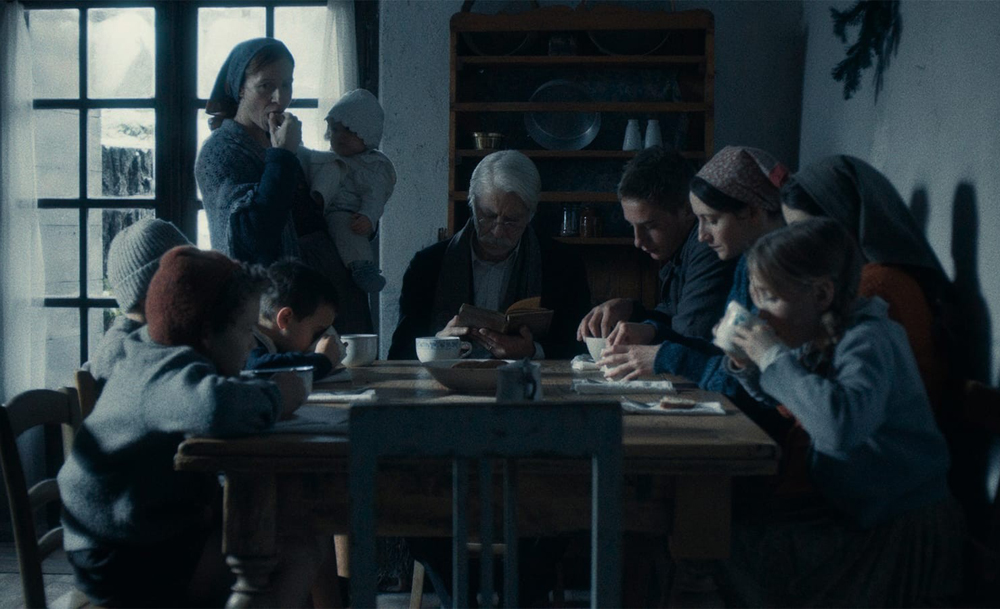The seed for “Vermiglio” came to Maura Delpero in a dream, imagining her father who had recently passed away as a six-year-old playing in his childhood home in the mountain village where he grew up in Italy from which the film takes its title. Delpero was paralyzed by his loss and unable to move in other ways — her narrative debut “Maternal” had just hit the festival circuit before the COVID lockdown prevented more travel — and so she started to write to work her way out of her grief, gradually realizing that to write about the time her father grew up in was to write a much larger moment of stasis and rebirth for their home country as it emerged from World War II.
Although nowhere near as explicit as the damage done to Rome and other major cities with bombed out buildings as Italy fought off the occupation of its neighbor Germany, the war shakes the pillars of the social order in the remote community where Cesare (Tommaso Ragno) and his family live in Delpero’s breathtaking drama. Too old to be drafted to serve in the military, the septugenarian may have sustained stability during the tumultuous times when he wasn’t pulled from his place running the local classroom in addition to where he sits at the head of his own very full dinner table. Yet his authority comes into question as his daughters Lucia (Martina Scrinzi), Ada (Rachele Potrich) and Flavia (Anna Thaler) are bound to have a far less straightforward future ahead than being married off as they would in generations past, with all eligible bachelors having left for the front lines with no guarantee of return, and his decisions regarding which students can move onto a higher education in his capacity as an educator and the fate of his family when resources are strained as a patriarch are far more scrutinized.
Unfolding over four seasons, the only constant is the change that’s in the air as Delpero employs a muted color palette in this place of exquisite natural beauty in the mountains to allow the elements that are growing and evolving to burst with vitality. Shifting the focus from Cesare to the women that live under his roof, the writer/director notes how an adherence to tradition can ultimately do more harm than good as people are encumbered by hidden desires that time reveals to be silly to conceal and discontent silently runs throughout the household where Cesare is chastised by his wife for continuing to purchase classical music on vinyl when the family can barely afford to put food on the table, his middle daughter Ada threatens to fail to meet her enormous promise when she’s been raised to settle and his eldest Lucia is quick to wed Pietro (Giuseppe De Domenico), a veteran of the war whose discharge brings local skepticism that would seem to upend the feeling of stability promised by such a union.
If Delpero’s debut was overlooked due to the timing of its release, a film for which the director spent four years embedded in Argentinian hostels for single mothers run by nuns to tell the story of a sister whose care for a pair of teens thrust into early parenthood causes reflection on where she is in her own life, “Vermiglio” is undeniable and the product of the same kind of rigorous research when the filmmaker stayed in the house where her grandfather lived to observe life as it is now, but the ways in which it has remained resistant to modernity. The fusion of Delpero’s eye for historical detail and an ability to look ahead make for a magnetic film and after a whirlwind tour of the fall festival circuit following its premiere in Venice and selected as Italy’s official selection for the Oscars, “Vermiglio” is now finding its way to theaters in the U.S. where its ambition can be best be appreciated. Recently, Delpero graciously took the time to talk about how her background in documentary continues to contribute to her methodical process towards making narrative dramas, achieving the impossible with a six-week shoot that organically capture a year of great change, and still waiting to catch her own breath after a season of such professional achievement.
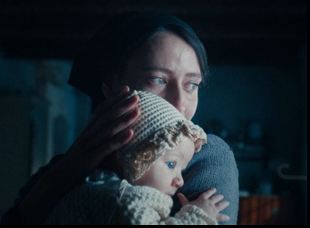
No, the dream was really the epiphany. Then, of course, when you begin to write, you understand that this world was inside you, but there is this external location that picks up from your unconscious, so while writing I discovered that I had an enormous [amount of] material that had to do with my childhood I could take inspiration from. But it was an instinctive way of beginning, and it was not a decision to be real.
It’s not what you’re describing, but similar as far as inspiration when you have this foundation of the four seasons and what you’ve said an “elliptical” quality to the storytelling that’s a bit magical, even as it’s rooted in reality.
I always try to listen to the material, to the world I’m depicting, and I felt that this world was really one of capital events. Not a lot of indirect chats and philosophical looking. It was really harsh, [with] a lot of cause and consequence and pushing forward to go on because there’s a necessity there. The nature is beautiful, but there’s war outside. It can kill you. You cannot stay there and think about it. It’s like, “Okay, a baby’s dying, another one comes,” so [the elliptical foundation] really has to do with the harsh world I’m talking about. It’s not a nostalgic film about these beautiful old times.
As in your previous film “Maternal,” it’s marvelous how you’re able to tackle a variety of cultural issues through the perspective of an ensemble. Does spreading things out to different characters help you find a structure?
I cherish the multiple points of view because I think it’s a more human and also a political way of talking about the world. Of course, it’s more difficult because you really have to pay attention so as not to lose the emotion and the attention of the viewer, but if you can have the viewer with you [engaged], it really gives a more prismatic attitude towards reality. And in this case, but also in the case of “Maternal,” since I was talking about the community, a community is a union of different points of view who are connected by the same thing. You are part of a community, but also an individual who has a point of view that can be very different from the other and this can give more complexity to situations and you [can] go deeper into the different layers and different points of view on the same thing, so it’s a good challenge to pursue.
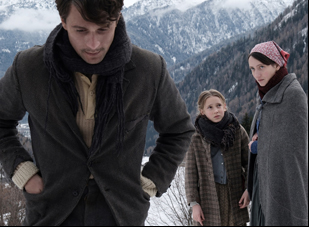
Yeah, it’s a method I have, both for documentaries and for these two fiction [films]. The first step for me is always to immerse myself in the place because I really believe in the personal experience of the five senses you can live in a situation and I also do it for an ethical position to depict the real world with truth. It’s a very creative moment, both in the house of the nuns in “Maternal” and here in the village [for “Vermiglio”], being there with them and writing while I’m there, it gave me a lot of ideas. It’s really inspiring. It’s much better than staying alone in your hotel room or house with the computer and everything is just theoretical.
It blew my mind that you shot this in six weeks when you do cover all four seasons. How did you go about setting up a production?
It blew also my mind. It was not a choice — to a certain extent, it was, because I could have had a little more budget if I had accepted things like, “Okay, you will put the big star in the film that guarantees us big box office.” But I wanted to respect and be delicate to the world I was constructing. Everything that I felt could be invasive and out of the context would have destroyed. So I accepted that if you do a film in [the village specific] dialect with unknown people, they will give you less money and less money means less weeks. But what I tried to do in that situation is to prepare a lot before. [It was going to be a few] weeks with babies and beasts and children and snow, but I really prepared [both] alone and with part of the crew. I personally scouted locations and I rehearsed a lot of situations, so when I arrived to the set, I am really prepared and [other] people are prepared in a way that makes them feel comfortable. It’s not like [the clapper is snapped] and it begins. It’s like their house they used to know, their beds they used to know, and the [the other actors] have turned into their siblings. It’s more natural. Having to rush is harsh, but [with this set-up] it’s not impossible.
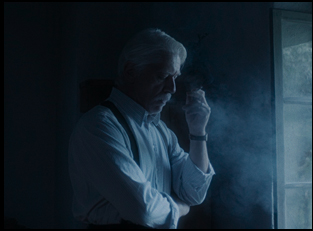
Most of the people you see in the movie, they speak this dialect in their life, so there were just some professionals [we brought in] that had to learn it, but I chose them in the north of Italy, so in a way, the accent was already a little nearer. But I also said to the professionals that could be an interesting acting tool that could give them a costume and I asked them to be in the mountains with me and going to eat with [the locals], drink with them and try to see how they move, which is very different from the city, so it became the music of the film. It was the code, and everyone that was participating was entering that other language, directly or metaphorically.
When you had a mix of professionals and nonprofessionals and you started seeing their dynamics with one another, was there anything you could get excited about that you might not have expected?
This is one of the biggest challenges, to mix them. But I did a lot of work on understanding who physiognomically and energetically they can be together and we organized a lot of events in which they were eating and doing other things together, and when I have all the patchwork, let’s say, then I organize things in a way that if you believe in it and you cast good people, they accept to be in the world. Of course, a famous professional actor that is putting your film among three other films and is on the telephone all the time, I don’t think they can enter this world, so when I offer [them] this role, I also ask for availability and for really trying to accept that you are entering another planet.
Of course, none of us loves difficulty. It has to be acceptable. But within an acceptable difficulty, it can also be a way to unite people and to feel that you’re really living a particular experience. For example, [Tomasso Ragno, who plays] the father, for weeks and weeks after until now, sends me messages like, “Oh, I can’t forget this experience. It was so strong.” And of course he was complaining about the cold [during the shoot]. [laughs] But I was like, “That’s the film. It’s a harsh world. It’s a harsh production.” The good thing is that the crew also accepted that they were doing a film [in this way] and I really appreciated it, because it was a co-production between three European countries. There were people who didn’t know each other, never worked together, and they found themselves up in the high mountains with a lot of difficulties and babies and animals. At the same time, they felt that they were part of an adventure in a way.
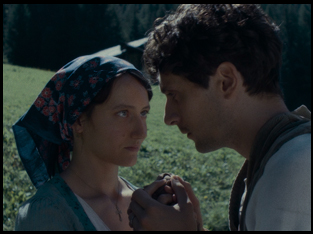
It was a really artisanal way of finding each specific aesthetic. We had references of paintings, but also autochrome photos and we knew that we were inventing something new, because I had been thinking a lot about this past aesthetic, and I didn’t want to have this exotic, nostalgic past [with] sepia or black-and-white. I wanted the colors of the changing seasons to be there, but at the same time, not with contemporary colors, but very saturated. We did these camera tests in pre-production, and then as we worked, there was the colorist already on set as a DIT and then there was a person in the lab that was working at the same time, so we were cherishing the aesthetic of the film every day, [trying] to really control it, because it was a specific [look]. I’m happy they took the challenge to finding this aesthetic because I feel that it has its own character.
Simply because it’s a breathtaking sequence, did you always have the centerpiece of the film – a montage that shows a flurry of events where the impact of them comes from how many happen in quick succession – scored to Vivaldi’s Four Seasons?
That was written like this in the script and I have been working with the same editor for years, and he reads the script from the very beginning, so we already speak the same language from very early on. But then we discovered things in the editing room, mostly [improving] the same concept, trying to make it stronger and clearer. That moment in the film was a turning point, when you have this first part of the film that invites you slowly in this world, and everything is apparently calm, and then you have this [Delpero makes a gesture of hands spinning around like a ferris wheel] and in the editing room, we were always doing this gesture. it’s like, “Woo!” And everything changes. It happens like this in life. There are certain moments that change everything.
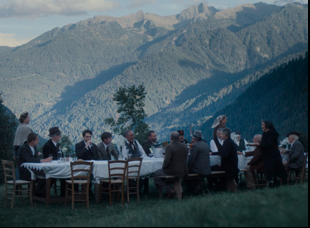
It’s the same [whirlwind] gesture that I had. [laughs] It reflects the movement of the film. I was looking at [the premiere in] Venice as a moment in which I could have rest, finally, and fortunately, I could not rest because it was really one event after the other. It’s a lot of work, but a lot of beautiful events, like the Oscar [shortlist], the IFA nominee, the box office in Italy, [which is] incredibly huge for this type of film and then a lot of festivals, now arriving in the U.S. and expanding to the other part of the ocean,, but a lot of possibility for the film to [find its] audience, which is great.
“Vermiglio” is open in New York at the IFC Center and opens in Los Angeles on January 3rd at the Laemmle Royal.
